8 items found
Page 1 of 1
-
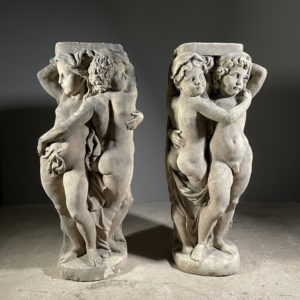
A pair of Victorian carved limestone figural groups
£6,800A pair of Victorian carved limestone figural groups
each stone carved in deep relief with a pair of embracing putti - almost as carytids - flat to the reverse for wall-mounting£6,800 -

Pair of Rosso Levanto marble columns,
£5,500Pair of Rosso Levanto marble columns,
each with turned socle on plinth base in Rojo Alicante marble.£5,500 -
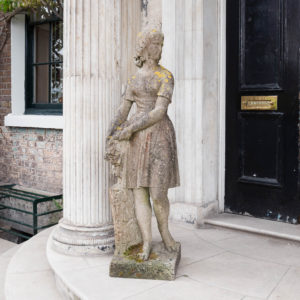
Nineteenth century marble statue of Summer,
£5,000Nineteenth century marble statue of Summer,
Italian, in the manner of Andrea Bertozzi, attractively weathered.£5,000 -
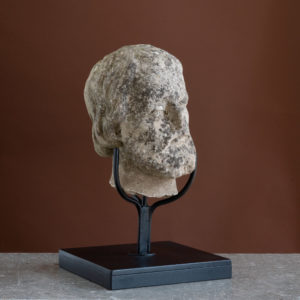
Weathered carved English Stone Head
£1,300Weathered carved English Stone Head
A worn and weatherbeaten sculpted stone head, possibly belonging to St Peter and likely Mid Ninteenth Century. Reputedly salvaged from the ruins of the 11th Century Church of St Mary and the Holy Rood at Little Chart in Kent. St Mary's Church was destroyed by a Flying Bomb on the 16th of August 1944 and later deconsecrated, with the parish reconstructed in neighbouring Great Chart£1,300 -
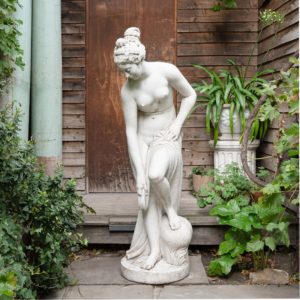
Large Italian figure of Venus after the Bath
£1,250Large Italian figure of Venus after the Bath
recently made in reconstituted marble, with surface wear and minor marks, suitable for exterior use.£1,250 -
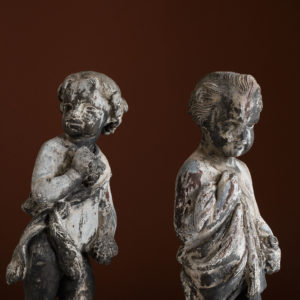
Pair of lead putti Summer and Autumn
£1,150Pair of lead putti Summer and Autumn
the pair of lead allegorical putti figures representing Summer and Autumn, Summer with flowers in its hand, Autumn with grapes. late nineteenth century Autumn is 66.5 cm high, Summer is 65 cm tall£1,150 -
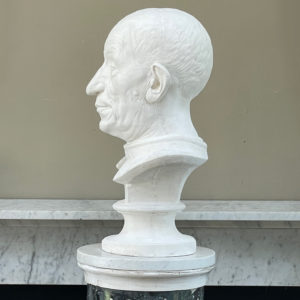
A cast plaster bust of the Florentine merchant, Pietro Mellini,
£630A cast plaster bust of the Florentine merchant, Pietro Mellini,
the head and neck bust, an abbreviation of the opulently robed head and upper torso original, mounted on a circular socle base. Cast by LASSCO in our Three Pigeons workshops,£630 -
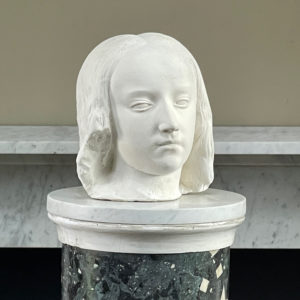
A cast plaster head of a girl,
£170
Featured Items
-
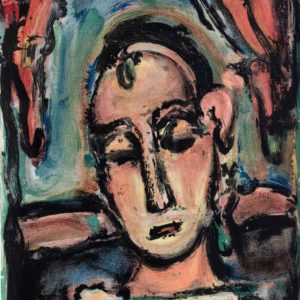
Head of a Girl by George Rouault, Verve Vol 2 / No. 5-6.
£800Head of a Girl by George Rouault, Verve Vol 2 / No. 5-6.
The Verve Review was a purposefully luxurious. It ran from 1937 to 1960, but with only 38 editions available, due to the high degree of design and editorial work dedicated to each issue. Each edition contained unique lithographic prints, commissioned by the editor, and each cover a double-page lithograph elaborated by one of the artists contained within. It was the brainchild of its editor Stratis Eleftheriades, a Greek National who moved to Paris in the early thirties to take part in the growing Modernist movement, writing under the name of Teriade.£800 -
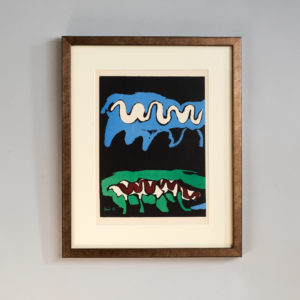
The Four Elements, Earth by Francisco Bores, Verve Vol. 1 / No. 1.
£600The Four Elements, Earth by Francisco Bores, Verve Vol. 1 / No. 1.
The Verve Review was a purposefully luxurious. It ran from 1937 to 1960, but with only 38 editions available, due to the high degree of design and editorial work dedicated to each issue. Each edition contained unique lithographic prints, commissioned by the editor, and each cover a double-page lithograph elaborated by one of the artists contained within. It was the brainchild of its editor Stratis Eleftheriades, a Greek National who moved to Paris in the early thirties to take part in the growing Modernist movement, writing under the name of Teriade.£600 -
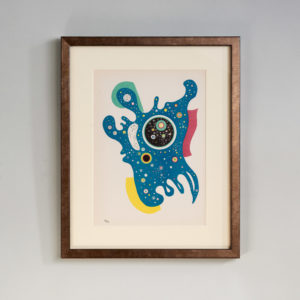
Stars by Wassily Kandinsky, Verve Vol. 1 / No. 2.
£800Stars by Wassily Kandinsky, Verve Vol. 1 / No. 2.
The Verve Review was a purposefully luxurious. It ran from 1937 to 1960, but with only 38 editions available, due to the high degree of design and editorial work dedicated to each issue. Each edition contained unique lithographic prints, commissioned by the editor, and each cover a double-page lithograph elaborated by one of the artists contained within. It was the brainchild of its editor Stratis Eleftheriades, a Greek National who moved to Paris in the early thirties to take part in the growing Modernist movement, writing under the name of Teriade.£800 -
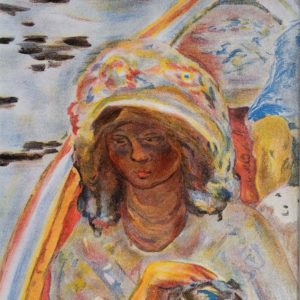
Portrait Fragment by Pierre Bonnard, Verve Vol 2 / No. 5-6.
£600Portrait Fragment by Pierre Bonnard, Verve Vol 2 / No. 5-6.
The Verve Review was a purposefully luxurious. It ran from 1937 to 1960, but with only 38 editions available, due to the high degree of design and editorial work dedicated to each issue. Each edition contained unique lithographic prints, commissioned by the editor, and each cover a double-page lithograph elaborated by one of the artists contained within. It was the brainchild of its editor Stratis Eleftheriades, a Greek National who moved to Paris in the early thirties to take part in the growing Modernist movement, writing under the name of Teriade.£600
